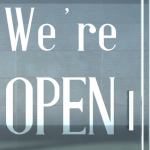
These are extraordinary times where we are all looking to our leaders for direction, action, safety and security. Our Governments look to world leaders, our nation looks to Government, and employees look to their leaders. Leaders, who now all need to be experts in crisis management.
Leadership in a crisis is a tough gig even for the experienced. In this time when the game is constantly changing and we are being updated regularly on what we can’t do, here are 2 things that leaders can do.
1: Keep it real
It’s a time for tough and open discussions. Honesty, in order to maintain and reaffirm a level of trust, should be a top priority – at all times but particularly in a crisis. Let your staff know that they can have honest conversations with you and your leadership teams about your plans for the organisation today and into the future.
There are a ton of articles and in-depth research on why trust should be the ultimate focus of leadership but now is not the time. When you do have time, I recommend reading:

- The 20th annual trust and credibility survey. Research conducted by Edelman Intelligence, a global insight and analytics consultancy.
- Patrick Lencioni’s book, ‘The Five Dysfunctions of a Team’. It’s about a team development model that explores the fundamental causes of organizational politics and team failure. Number one is trust.
- This article on being clear to be kind by author and researcher Brene Brown.
2: Be Safe
I’m not talking about washing hands. I’m talking about personal, individual care. While your company is preparing ways to continue some kind of productivity your people need to know you are concerned about employee wellbeing and even burnout. Let them know you are aware of the stresses they are carrying:
- Managers are having to step up to deal with a level of unprecedented stress and anxiety across teams and even their own.
- CFOs are having to make the toughest decisions.
- Parents are preparing for work at home with their whole family.
What can you do?
Provide resources for support. Provide resources to manage their stress, offer individual or team coaching, demonstrate your empathy.
I recently shared about a survey of 7,500 full-time employees by Gallup found the top five reasons for burnout are:
- Unfair treatment at work
- Unmanageable workload
- Lack of role clarity
- Lack of communication and support from their manager
- Unreasonable time pressure
Burnout, by the way, is usually a slow burn. In fact, there are five stages to burnout and while this might not be a typical scenario (but then again this isn’t a typical scenario), signs of burnout (lack of energy, reduced performance and concentration) are likely to pop up as people return to the workplace.
- How can you help your employee mindsets and wellbeing right now and for the future?
- How can you help them feel like they are being heard and fairly treated?
- That they return not overworked from the work at home juggle?
- That they had and have clarity around what’s next for them and the organisation?
These are all questions are worth considering. I would add loneliness to this stress. How will you keep your people communicating with each other and as a whole during this time?
Final word.
This is a difficult time but we know we will see the other side.
Please let us know if there is anything we can help with in terms of coaching support. Our virtual platform is as flexible as our crisis plans need to be, personalised, scalable, and will remain at the highest discounted rate until we see an end to this crisis.
I’ll leave you with this quote from Shawn Achor, author of The Happiness Advantage.
“The best leaders are the ones who show their true colours not during the banner years but during times of struggle.”







No comment yet, add your voice below!